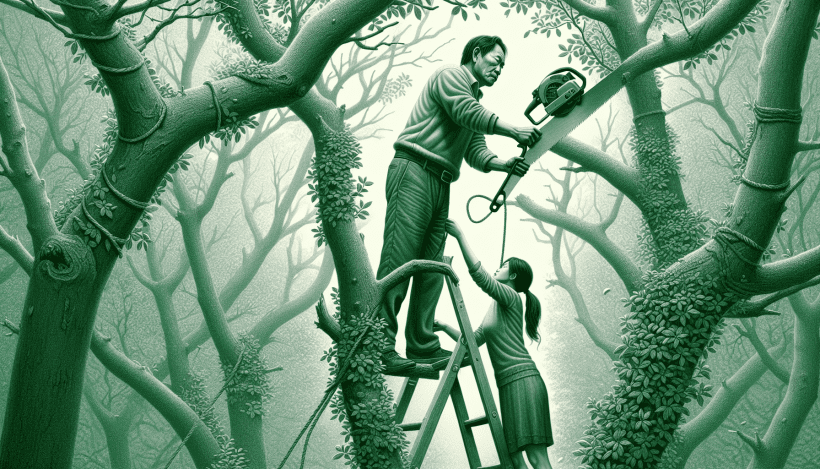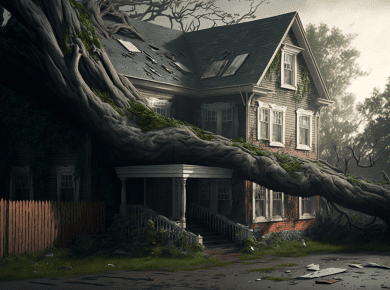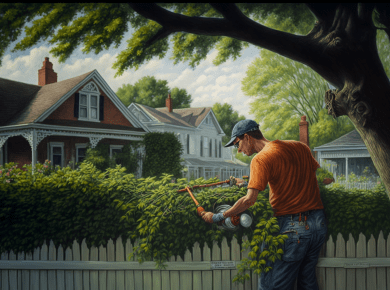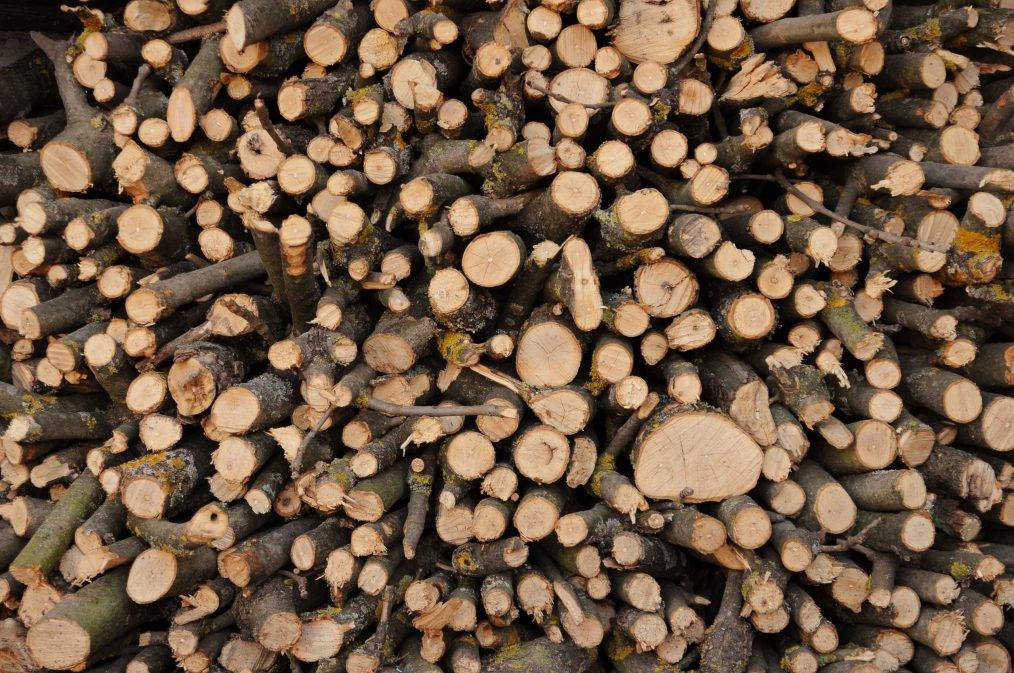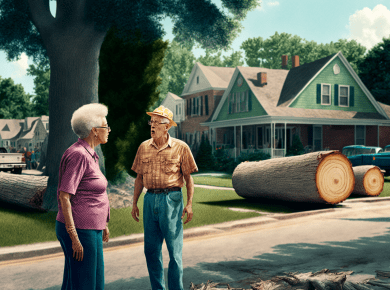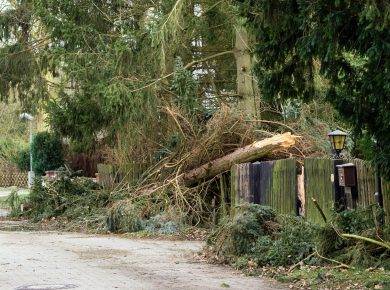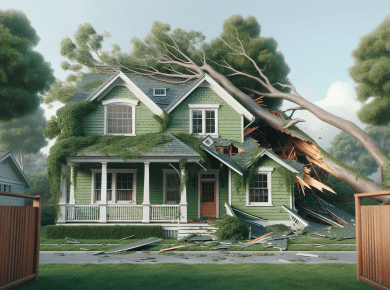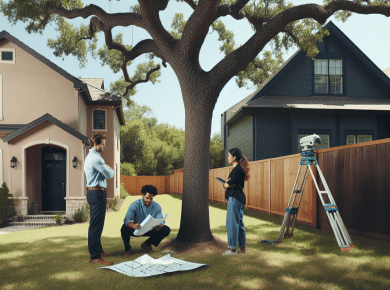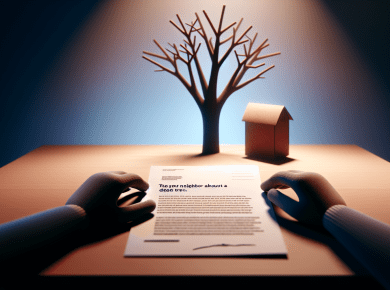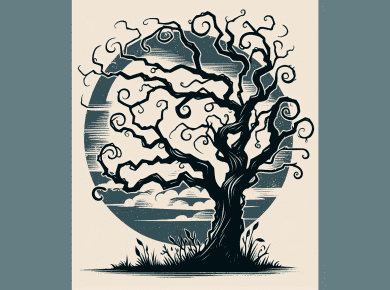Understanding Tree Ownership
Understanding tree ownership is crucial for navigating legal responsibilities and neighbor disputes involving overhanging branches. This section covers property owner responsibilities and ownership rights in Ohio and Pennsylvania.
Property Owner Responsibility
Property owners are typically responsible for maintaining the trees on their property and ensuring that they do not encroach upon neighboring properties. This includes the obligation to manage overhanging branches. According to Ohio law, landowners have the legal right to trim branches of a neighbor’s tree that extend over their property line. However, it is essential to act with “reasonable care” when trimming to prevent harm, as failing to do so can lead to legal liability (Ohio State University Extension).
Ownership Rights in Ohio
In Ohio, trees located on property lines are co-owned by both landowners. If one landowner wishes to remove a tree on the property line, they must obtain permission from the neighbor. Failure to seek permission can lead to liability for any damages caused by the removal or if the tree dies due to improper cutting.
| Aspect | Details |
|---|---|
| Co-Ownership of Trees | Trees on property line are owned by both landowners |
| Permission Required for Removal | Consent from neighbor is necessary to remove property line trees |
| Liability for Improper Cutting | The remover may be liable if improper techniques are used |
Ohio law also addresses liability concerning trees that fall. Typically, landowners are not liable for damage from a falling tree unless there are clear signs of risk, such as damage or disease.
Ownership Rights in Pennsylvania
In Pennsylvania, the general rule is that the property owner is responsible for maintaining trees on their property, including addressing overhanging branches. However, if a tree’s roots or branches extend onto the neighbor’s property, it may create disputes over the maintenance and liability for damages.
Landowners have the right to trim any overhanging branches, but this right is typically limited to trimming back only to the property line, avoiding any damage to the tree itself. If neighbors cannot resolve disputes over overhanging branches or damage caused by trees, it may be necessary to consult legal resources to determine the next steps.
For more information about property line trees, see our articles on who is responsible for cutting overhanging tree branches and neighbors tree fell on my house.
Neighbor Disputes Overview
In matters of neighbor disputes related to trees, understanding the rights and responsibilities concerning overhanging branches, liability for fallen trees, and fence repair is crucial. This section provides insights into these aspects to assist individuals facing such conflicts.
Rights to Trimming Overhanging Branches
In Ohio, landowners possess the right to trim overhanging branches from a neighbor’s tree, provided that they do not trespass onto the neighbor’s property and avoid causing undue harm to the tree (Ohio State University Extension). Care should be taken during the trimming process; damaging the tree could render the trimming party liable for any harm inflicted. Individuals considering trimming should also be aware that excessive pruning or cutting without permission can lead to legal repercussions, which may include penalties of up to $250 and/or 30 days in jail for reckless damage to trees on another’s property.
Liability for Fallen Trees
Liability for damage caused by a fallen tree from a neighboring property is generally determined by the court system. Typically, landowners are not held liable for damage caused by a tree that falls unexpectedly. However, if it is established that a tree was likely to fall due to existing damage, disease, or decay, the landowner may be found responsible for the resultant damage.
| Scenario | Likely Outcome |
|---|---|
| Tree falls without prior sign of damage | Typically not liable |
| Tree falls due to visible damage/disease | Potentially liable for damages |
For those inquiring about responsibilities related to fallen trees, further details can be found in our article on who is responsible for fallen tree removal.
Fence Repair Responsibility
When it comes to fence repair after a tree falls, the laws in Ohio leave some ambiguity. The responsibility for repairing a line fence that has been damaged by a fallen tree is not clearly defined, prompting landowners to reach an understanding or seek intervention from township trustees or the courts. Livestock owners, in particular, bear the responsibility for ensuring that their animals are properly contained, which can also impact fence repair disputes.
Questions regarding responsibility in these situations can lead to disputes, and neighbors may find it beneficial to communicate openly or seek mediation if disagreements arise. Additional information on tree-related disputes can also be explored in articles like neighbors tree fell on my house and tree on property line.
Legal Considerations in North Carolina
In North Carolina, understanding the legal responsibilities surrounding tree maintenance, utility easements, and replanting obligations is crucial for neighbors dealing with disputes related to trees.
Tree Maintenance Responsibilities
Property owners in North Carolina are responsible for the maintenance and care of trees, shrubs, and other vegetation located on their private property. This includes ensuring that these plants do not create safety risks. However, property owners are generally not permitted to cut or prune trees located in right-of-ways or easements designated for public utilities and sidewalks. For more details on these responsibilities, refer to the guide on who is responsible for cutting overhanging tree branches.
| Responsibility | Description |
|---|---|
| Property Owners | Maintain trees, shrubs on private property |
| Local Governments | Ensure trees in public areas do not pose safety risks |
Utility Easements and Tree Care
Utility easements grant local governments and utility companies specific rights to maintain vegetation that may affect their infrastructure. Property owners might be prohibited from planting certain types of vegetation within these easements. This allows utility companies to effectively prune or remove trees and shrubs that interfere with the maintenance of utilities, such as power lines and water pipes. If a neighbor’s tree is affecting utility lines, it is often the utility company’s responsibility to address the issue.
| Type of Easement | Responsibilities |
|---|---|
| Utility Easements | Companies may prune or remove obstructing vegetation |
| Property Owners | Cannot plant certain vegetation in easements |
For more information, explore our content on who is responsible for fallen tree removal.
Replanting Obligations
In the case of tree removal, ownership responsibilities regarding replanting can vary. Cities and utility companies may choose to replant trees they remove from public property or utility easements, although this is not guaranteed. On the other hand, property owners are required to replant any trees or vegetation that have been removed from their private property. This underscores the importance of proper tree maintenance and care on private lots.
| Obligation | Description |
|---|---|
| Cities/Utilities | May or may not replant trees removed from public property |
| Property Owners | Required to replant trees and vegetation on their property |
For strategies on managing relationships with neighbors affected by tree disputes, consult articles related to neighbors tree fell on my house and fallen tree removal. Understanding these legal considerations can help neighbors navigate potential conflicts effectively.
Legal Considerations in Ohio
Navigating tree ownership and responsibilities in Ohio can be complex. Understanding tree ownership laws, determining responsibilities for fallen trees, and addressing line fence repair disputes is crucial for residents dealing with neighbor disputes involving trees.
Tree Ownership Laws
In Ohio, trees located on the property line are considered owned by both landowners. This means that if one property owner wishes to remove a tree that straddles the boundary, they must seek permission from the neighbor. Failing to obtain such consent can lead to liability for the tree’s removal or if the tree dies due to improper cutting.
| Tree Location | Ownership | Permission Required for Removal |
|---|---|---|
| On Property Line | Joint Ownership | Yes |
| Entirely on Own Property | Sole Ownership | No, but negligence principles apply |
It is also important to note that a person who injures a tree on a neighbor’s property could be liable for up to three times the value of the tree under Ohio Revised Code 901.51, which addresses the reckless destruction of vegetation.
Responsibilities for Fallen Trees
Ohio law does not specifically clarify whether a landowner has the right to keep timber or firewood from a neighbor’s tree that has fallen onto their property. It is generally recommended for landowners in this situation to communicate with the affected neighbor, allowing them a reasonable opportunity to claim ownership and remove their share of the tree. Documenting this process can help avoid future disputes.
Line Fence Repair Disputes
When it comes to line fence disputes, Ohio Revised Code 971.17 requires landowners to provide written notice at least 28 days in advance before removing a shared line fence. Failure to give proper notice could result in trespassing concerns. This is particularly relevant for trees that may impact the integrity or design of a shared fence.
| Action | Requirement | Consequences of Non-Compliance |
|---|---|---|
| Remove Shared Fence | Written notice 28 days in advance | Potentially trespassing |
| Trim Neighbor’s Tree Branches | Reasonable care required | Liability if harm occurs |
Landowners have the legal right to trim branches of a neighbor’s tree that overhang their property, even if the tree is not on the property line. However, this action must be performed with reasonable care to avoid causing harm. Failing to maintain this standard could again lead to liability (Ohio State University Extension).
For more information on tree-related disputes, consider reviewing articles on who is responsible for cutting overhanging tree branches and who is responsible for fallen tree removal.
Legal Considerations in Pennsylvania
Understanding the legal framework regarding trees in Pennsylvania is vital for resolving neighbor disputes concerning overhanging branches and root intrusions. This section looks at tree encroachment laws, tree root trespass, and the regulations surrounding trees in public right-of-way areas.
Tree Encroachment Laws
In Pennsylvania, property owners have the right to trim branches that encroach on their property from a neighboring tree. However, they must do so carefully to avoid damaging the overall health of the tree. It is advisable to consult local ordinances or guidelines about specific trimming procedures. Neighbors are encouraged to communicate with each other about any encroachment issues before taking unilateral action. For more information on related responsibilities regarding trees, read about who is responsible for cutting overhanging tree branches.
Tree Root Trespass
Tree roots encroaching on a neighbor’s property can be considered a legal trespass. Courts in Pennsylvania have held that when tree roots from a neighbor’s tree invade another property, the affected property owner can seek an injunction for the removal of the roots and claim the costs from the neighbor (WeConservePA). It is important for property owners to document any damages caused by tree roots and consult legal resources if disputes arise.
| Action | Description |
|---|---|
| Right to Trim | Neighbors may trim overhanging branches within their property boundaries. |
| Trespass | Invading tree roots can be regarded as a legal trespass subject to remediation. |
For case-specific situations, property owners may benefit from guidance on the removal of invasive tree roots and considerations regarding fallen tree removal.
Public Right of Way Trees
In Pennsylvania, trees located in the public right of way are generally owned by the abutting property owner but are controlled by the municipality. The extent of this control can vary, as responsibilities for maintaining safety and addressing hazards may fall on different entities within the municipality (WeConservePA). If such trees cause damage or injury, it is typically the responsibility of the responsible entity to remedy the situation.
Property owners should familiarize themselves with local ordinances regarding public right of way trees. Understanding these guidelines can help prevent disputes between neighbors about responsibility and liability related to these trees.
Navigating legal responsibilities regarding tree ownership, encroachment, and public rights can mitigate tensions and facilitate smoother relations between neighbors. For additional questions regarding tree disputes, please refer to the articles on neighbors tree fell on my house and tree on property line.
Guidelines for Resolving Disputes
Navigating disputes concerning overhanging tree branches can be challenging. It is crucial for neighbors to understand their rights and responsibilities. The following guidelines provide a professional approach to resolving these conflicts.
Communicating with Neighbors
Open communication is key to resolving disputes effectively. Neighbors should approach each other amicably to discuss concerns regarding overhanging branches. Here are some tips for facilitating these conversations:
- Be Respectful: Use a polite tone to express your concerns.
- Be Clear: Clearly outline the specific issues caused by the overhanging branches, such as property damage or safety hazards.
- Propose Solutions: Offer reasonable solutions, like trimming the branches or sharing the costs of hiring a professional.
If direct communication does not lead to a resolution, documenting conversations can help when seeking further assistance or legal resources.
Seeking Legal Recourse
If amicable communication fails, legal actions may be necessary. Understanding who is responsible for cutting overhanging tree branches is essential. Neighbors in Ohio, for example, can trim branches that obstruct their property but must avoid causing damage to the tree or trespassing onto the neighbor’s land (Ohio State University Extension).
Should disputes escalate, consulting with a legal professional can provide insight into the specific rights and laws applicable in your state. For instance, Pennsylvania enables property owners whose land has been invaded by tree roots from a neighbor’s tree to seek an injunction for removal (WeConservePA). Legal fees can vary, and it’s important to be prepared for possible litigation.
Utility Company Rights
It is also vital to understand the involvement of utility companies in tree disputes. Utility companies are often permitted to trim trees for maintenance of infrastructure like power lines within their right of way or easements. Landowners usually have limited control over this process and may not prevent utility companies from executing this right, even if previous trimming has not occurred (Ohio Farm Bureau Federation).
For any damage resulting from utility company actions, contacting them directly may resolve issues amicably. It may also be beneficial to review any existing easement agreements to fully understand the rights of both the landowner and the utility company.
Understanding these guidelines can help neighbors effectively address overhanging tree branch issues and foster better community relationships. For more information on specific liability concerns, you may refer to articles on who is responsible for cutting overhanging tree branches or who is responsible for fallen tree removal.
